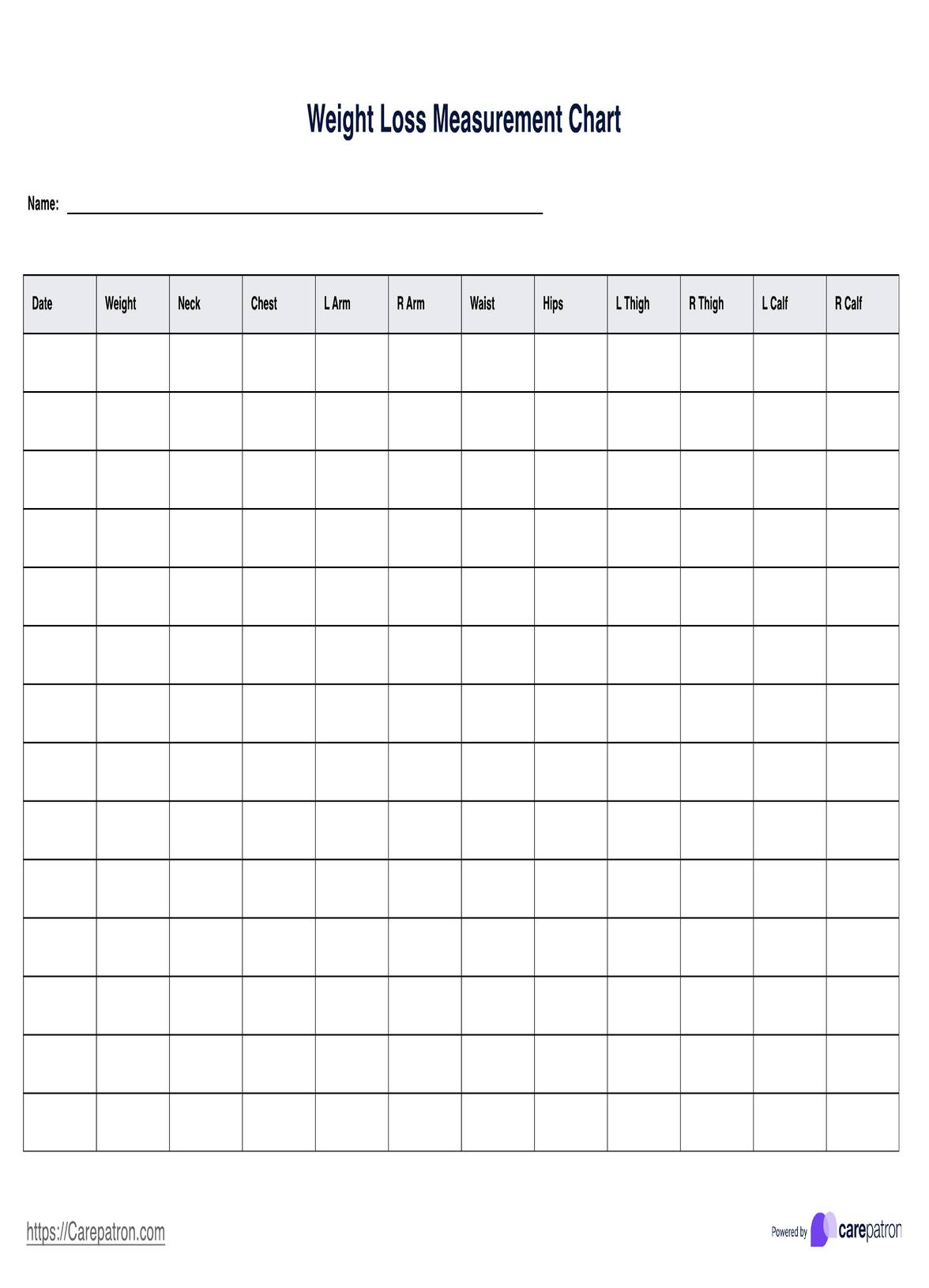To create a Weight Loss Measurement Chart Template, record the patient's or client's initial body measurements in various areas such as neck, chest, arms, waist, hips, and calves, and then update these measurements regularly to track changes over time.

Weight Loss Measurement Chart
Streamline tracking of physical changes in weight loss journeys with our Weight Loss Measurement Chart Template, perfect for healthcare and fitness pros!
Weight Loss Measurement Chart Template
Commonly asked questions
These templates are used during initial weight loss or fitness consultations, regular health check-ups, post-treatment monitoring, throughout fitness programs, and for goal setting and motivation in weight management and fitness journeys.
Healthcare and fitness professionals use these templates to systematically record and track changes in body measurements of their patients or clients, providing a comprehensive view of physical progress during weight loss or fitness regimens.
EHR and practice management software
Get started for free
*No credit card required
Free
$0/usd
Unlimited clients
Telehealth
1GB of storage
Client portal text
Automated billing and online payments











